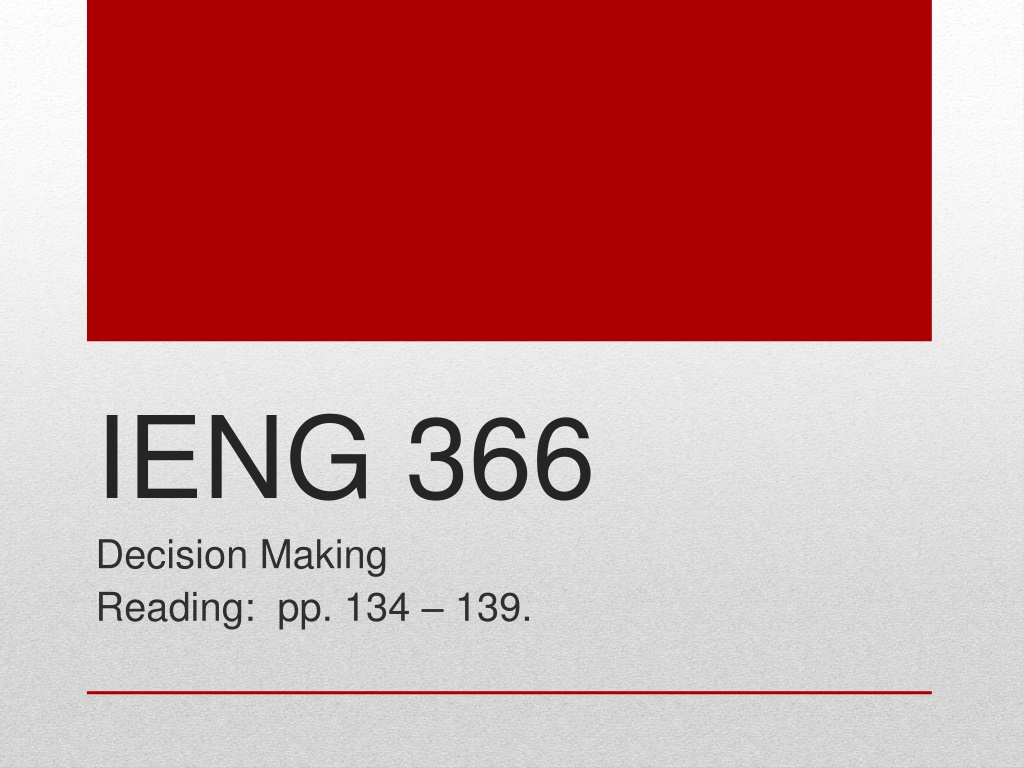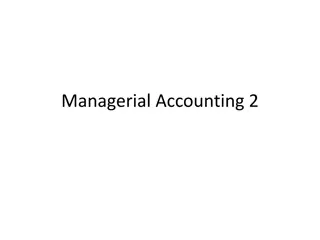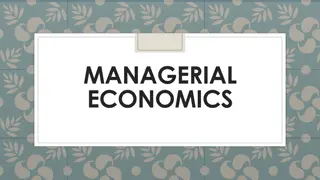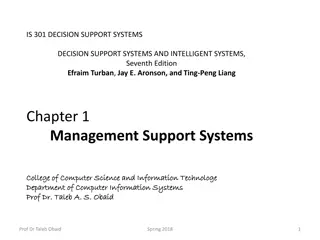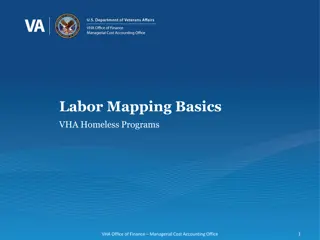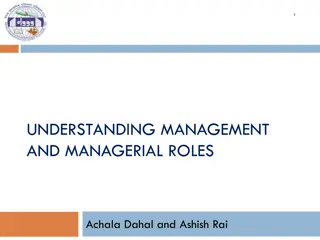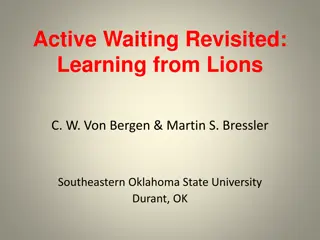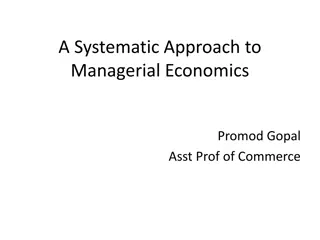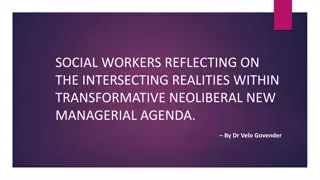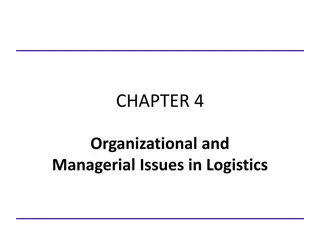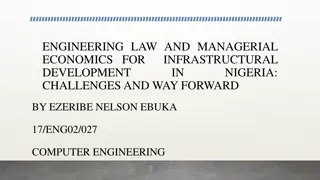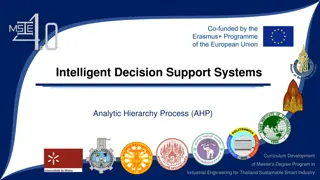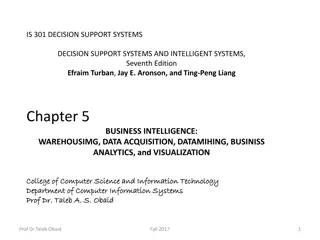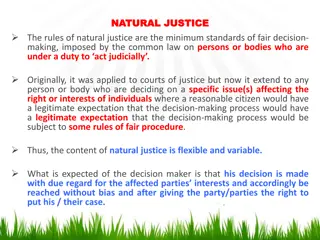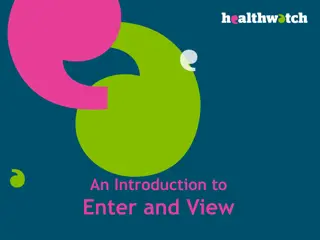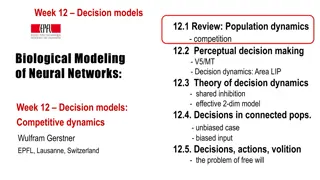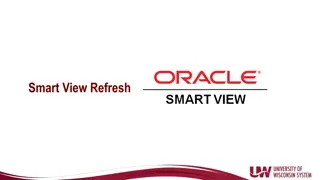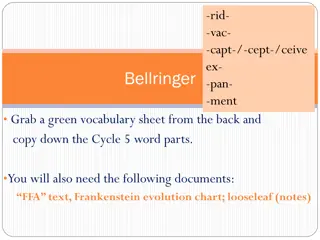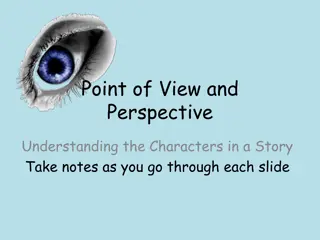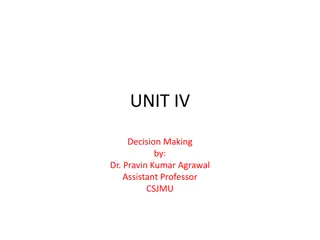Managerial Decision Making and Systems View Process
Managerial decision making involves choosing between rational alternatives within a structured process, which includes defining the problem, collecting data, developing hypotheses, testing hypotheses, analyzing results, and drawing conclusions. The systems view approach encompasses all significant variables related to the problem, encouraging a team approach with diverse backgrounds. Real-world models involve formulating and testing mathematical models to derive solutions and apply them to actual systems. Decision making tools, such as linear programming, aid in optimal resource allocation under different levels of certainty, risk, or uncertainty.
Download Presentation

Please find below an Image/Link to download the presentation.
The content on the website is provided AS IS for your information and personal use only. It may not be sold, licensed, or shared on other websites without obtaining consent from the author. Download presentation by click this link. If you encounter any issues during the download, it is possible that the publisher has removed the file from their server.
E N D
Presentation Transcript
IENG 366 Decision Making Reading: pp. 134 139.
DECISION MAKING Managerial decision making is the process of making a conscious choice between two or more rational alternatives
Systems View Include all of the significant, interrelated variables of the problem Team Approach Personnel with heterogeneous backgrounds / training work together Emphasis is on the use of: formal mathematical models statistical methods quantitative techniques Management Science Characteristics
Real World Model World Formulate the Problem Construct a Mathematical Model Test the Model Derive a Solution from the Model Apply the Model s Solution to the Real System Management Science Process
1. Define the problem 2. Collect data 3. Develop hypotheses 4. Test hypotheses 5. Analyze results 6. Draw conclusion Planning Process: Scientific Method
1. Define the problem 2. Collect and analyze the data 3. Search for alternatives 4. Evaluate alternatives 5. Select solution and evaluate the impact Engineering Problem Solving Approach
Certainty Risk Uncertainty Categories of Decision Making Tools
Table 5-1 Payoff Table If the probability of any one outcome state is 1.0 (certainty), then just pick the alternative with the best payoff. Decision Making Under Certainty
Linear Programming One of best known tools of Management Science Used to determine optimal allocation of an organization s limited resources Decision Making Under Certainty
Preliminaries State the Problem Identify the Decision Variables Formulate the Objective Function Formulate the Constraints Linear Programming
P = $10x + $14y (Machining Time) P = $560 (Assembly Time) P = $620 P = $0 P = $400 Figure 5-2 Linear program example: Constraints and Solution.
Expected Value Decision Trees Queuing Simulation Decision Making Under Risk
Table 5-3 Well Drilling ExampleDecision Making Under Risk Decision Making Under Risk
Buying Fire Insurance: Payoff Table Table 5-2 Decision Making Under Risk
Buying Fire Insurance: Decision Tree and Expected Value Figure 5-3 Example of a decision tree.
Queueing Theory Applications Table 5-4 Typical Waiting-Line Situations
Continuous Risk Model: Risk as a Variance Table 5-5 Data for Risk as Variance Example
Figure 5-4 Projects with the same expected value but different variances.
Maxi-Max Maximize the maximum outcome (best case) Maxi-Min Maximize the minimum outcome (least bad) Hurwicz Choose a position in-between optimism and pessimism = % optimistic outcome happens, 1 - = % pessimistic outcome happens Equally Likely = 50% for two outcomes (etc. ) Mini-Max Regret Minimize the maximum regret (regret = payoff left unclaimed) Decision Making Under Uncertainty
Table 5-7 Well Drilling Example Decision Making Under Uncertainty Regret Analysis
Six Thinking Hats Rock, Paper, Scissors (Lizard, Spock) Coin flipping, drawing straws, throwing dice Other Techniques
Investing in a New Facility Decision The applicable payoff table of profits (+ ) and losses (- ) is: How Would YOU Decide?
Investing in New Tooling Decision If your alternatives and their outcomes (in thousands of dollars) are as shown in the following table, what should be your decision? How Would YOU Decide?
Questions & Issues? IENG 366 Engineering Management
